Disclosure: This article contains affiliate links. We may earn a commission from purchases at no extra cost to you, which helps our travel content.
After nearly three decades managing recreation programs in Minneapolis, I've developed a knack for spotting hidden potential. The same applies to travel—especially in Edinburgh, where the Royal Mile offers far more than the obvious attractions. Having visited Scotland six times in the past decade (my Scandinavian roots give me an affinity for these northern landscapes), I've compiled my favorite overlooked spots along this historic stretch. While tourists queue for Edinburgh Castle and Holyrood Palace, savvy couples can explore these lesser-known treasures that reveal Edinburgh's soul.
The Secret Gardens of Dunbar's Close
Just steps from the bustling Royal Mile lies one of my favorite retreats in all of Edinburgh. Dunbar's Close Garden is a meticulously reconstructed 17th-century formal garden that most tourists walk right past, mistaking its narrow entrance for just another alleyway.
The first time I stumbled upon it, I'd been searching for a quiet spot to rest my feet after a morning of exploration. What I found was a time capsule—immaculately trimmed hedges, gravel pathways, and wooden benches nestled among flowering plants arranged in traditional patterns. The garden follows the same layout wealthy Edinburgh residents would have enjoyed during the time of Charles II.
Last summer, my tennis buddy Mark and his wife joined me for a weekend in Edinburgh. We packed a simple picnic lunch, grabbed a bottle of local gin (Edinburgh has become quite the gin hub), and spent a blissful hour in this hidden oasis while crowds shuffled past just meters away, completely unaware.

💡 Pro Tips
- Visit early morning or late afternoon to have the garden nearly to yourself
- Bring a small picnic and make use of the benches
- Look for seasonal herbs and plants that would have been used in 17th-century cooking
The Real Witches' Well
While tourists flock to the obvious witch-related sites, few notice the small bronze fountain on the esplanade of Edinburgh Castle. This modest memorial marks a dark chapter in Scottish history—the spot commemorates over 300 women burned as witches on Castle Hill.
I first learned about this site from a local historian I met at a pub near my hotel. He explained that the memorial was created in 1894 but the witch trials themselves occurred primarily in the 16th and 17th centuries. The plaque and fountain serve as a sobering reminder of religious hysteria and misogyny.
The site isn't flashy or prominently marked, which is why most visitors walk right past it. But standing there, looking out over the same city views these women would have seen in their final moments, creates a powerful connection to Edinburgh's complex past.
If you're interested in Edinburgh's darker history, I recommend picking up a copy of Edinburgh history book before your trip. It provided me with fascinating context that transformed how I experienced the city's historical sites.

💡 Pro Tips
- Visit early before the castle crowds arrive
- Take time to read the inscription and reflect on this overlooked piece of history
- Look for the serpent-head spout and foxglove design, both connected to accusations of witchcraft
The Writer's Museum & Makars' Court
Tucked away in Lady Stair's Close is a literary treasure that celebrates Scotland's three greatest writers: Robert Burns, Sir Walter Scott, and Robert Louis Stevenson. What makes this spot special isn't just the museum itself (though the personal artifacts are fascinating), but the often-overlooked Makars' Court outside.
The flagstones of this courtyard are inscribed with quotations from Scottish writers spanning 600 years. It's like walking across a living anthology of Scottish literature. During my last visit with my son (who's developed quite an interest in street art), we spent nearly an hour just photographing our favorite quotes.
The museum itself is housed in a 1622 building, and while it's free to enter, many tourists miss it entirely. Inside, you'll find Burns' writing desk, Scott's childhood rocking horse, and the ring given to Stevenson by a Samoan chief.
I always carry my pocket notebook to jot down particularly moving quotes I discover. On my last visit, I filled three pages with Scottish wisdom I wanted to remember. If you appreciate literature, this hidden gem offers a profound connection to Scotland's literary soul.

💡 Pro Tips
- Look down as you walk through Makars' Court to discover literary quotes in the flagstones
- The museum is free but consider making a small donation
- Ask the knowledgeable staff about special literary events happening during your stay
The Real Mary King's Close
While not entirely unknown, many visitors still miss the opportunity to explore the Real Mary King's Close, a remarkably preserved 17th-century street now buried beneath the Royal Mile. Unlike other attractions that reconstruct history, this is the genuine article—actual homes and businesses where Edinburgh residents lived and worked.
What makes this site extraordinary is how it illuminates the daily lives of ordinary people rather than royalty or nobility. The narrow close (alleyway) was partially demolished and built over when the Royal Exchange was constructed in the 18th century, effectively preserving this slice of Edinburgh life.
My first visit was on a rainy afternoon in 2018. Our guide, dressed in period costume, shared stories of the plague that devastated the close's residents and the cramped conditions they endured. The most affecting moment came in a small room now filled with dolls and toys—offerings left by visitors after a psychic claimed to have encountered the spirit of a little girl named Annie who died of the plague.
Pro tip: Book your tickets online with the skip-the-line option to avoid disappointment, especially during summer months when wait times can exceed two hours. The tours fill quickly, and having your spot secured means one less thing to worry about.

💡 Pro Tips
- Book the first or last tour of the day for a less crowded experience
- Wear comfortable shoes as the surfaces are uneven and authentic to the period
- Photography is prohibited inside, so be present and absorb the experience
Advocate's Close & Hidden Viewpoints
Edinburgh is a city of levels, where narrow passageways often reveal unexpected views. Advocate's Close, dating from the 15th century, offers one of the Royal Mile's most photogenic vistas, yet many tourists walk right past its entrance.
This steep, narrow close was once home to prominent advocates (Scottish lawyers) and connects the Royal Mile to Cockburn Street below. What makes it special is the perfectly framed view of the Scott Monument and the city beyond. The perspective creates a sense of discovery—a secret Edinburgh revealed only to those curious enough to venture down these ancient pathways.
I've visited Edinburgh in all seasons, but there's something magical about summer evenings here when the light lingers until 10 PM. Last year, my son and I brought along a travel tripod and captured some stunning long-exposure shots of the close at dusk. The contrast between the ancient stonework in the foreground and the Victorian monument in the distance creates a perfect visual representation of Edinburgh's layered history.
After photographing the close, we discovered a tiny whisky bar tucked away at the bottom where we struck up a conversation with a local architect who pointed us toward several other hidden viewpoints nearby. This kind of serendipitous discovery is what makes exploring Edinburgh's closes so rewarding.

💡 Pro Tips
- Visit around sunset for the best lighting and fewer people
- Look for the plaque explaining the close's history
- Continue all the way down to discover businesses and cafes that most tourists never find
Tweeddale Court's Literary Heritage
Tweeddale Court is easy to miss—its entrance on the Royal Mile is narrow and often overshadowed by more prominent attractions. Yet this close holds significant literary history and offers a peaceful retreat from the main thoroughfare's bustle.
The court was once home to Tweeddale House, built in 1576 for the Marquess of Tweeddale. Today, it houses the Scottish Book Trust, continuing the location's literary connections. But what truly fascinates me about this spot is its connection to publishing history—it was once the workplace of William Smellie, who printed the first Encyclopedia Britannica in 1768.
During my research before visiting, I found an excellent Edinburgh literary guide that highlighted this and other literary connections throughout the city. It transformed my appreciation of these seemingly ordinary spaces.
What I love most about Tweeddale Court is how it opens up unexpectedly into a spacious courtyard after the narrow entrance—a physical metaphor for how Edinburgh reveals itself gradually to those willing to explore beyond the obvious. The architectural details here span centuries, from medieval elements to Victorian additions.
In summer, the court sometimes hosts small book events and readings. During my last visit, I stumbled upon a poetry reading that ended up being one of the highlights of my trip.

💡 Pro Tips
- Look for the plaque commemorating the first Encyclopedia Britannica
- Visit on weekdays when the Scottish Book Trust might be hosting public events
- Notice the architectural details spanning different periods of Edinburgh's history
Trunk's Close & Moubray House
Of all Edinburgh's hidden historical gems, Trunk's Close holds a special place in my heart. This narrow passage leads to Moubray House, one of the oldest surviving buildings on the Royal Mile, dating from around 1477. What makes this location extraordinary is that it represents one of the few remaining examples of how the Royal Mile looked before modernization.
The first time I discovered Trunk's Close, I was actually lost—trying to find my way back to the main street after exploring another close. What appeared to be a dead end suddenly revealed this architectural treasure. Moubray House has witnessed nearly 550 years of Scottish history, including the reign of James IV and the tumultuous periods that followed.
During my most recent visit, I brought along my audio guide which provided fascinating details about the building's history that I would have otherwise missed. The audio tour explained how Daniel Defoe, author of Robinson Crusoe, once lived here while working as a British spy before the 1707 Act of Union.
What strikes me about places like Trunk's Close is how they represent Edinburgh's remarkable historical continuity. While most cities have demolished their medieval structures, Edinburgh has incorporated them into its living fabric. Standing in this close, you can almost hear the echoes of centuries past—the merchants, writers, and ordinary citizens who walked these same stones.

💡 Pro Tips
- Look up to see the original timber-framed structure of Moubray House
- Visit early morning when the light creates dramatic shadows on the ancient stonework
- Search for the small plaque mentioning Daniel Defoe's connection to the building
Final Thoughts
Edinburgh's Royal Mile reveals its true character not in the crowded tourist attractions but in these hidden historical gems that most visitors walk past without a second glance. After multiple visits spanning over a decade, I've come to appreciate how these overlooked spaces tell a more authentic story of Edinburgh than the castle ever could.
What makes these hidden spots particularly special for couples is the shared sense of discovery—those 'did you see that?' moments that become cherished memories of your time together. There's something wonderfully intimate about finding a quiet corner of history that feels like it belongs just to you, if only for a moment.
Next time you visit Edinburgh, I encourage you to set aside at least half a day for purposeful wandering. Put away the standard guidebook, look for the narrow openings between buildings, and follow your curiosity down the wynds and closes of the Royal Mile. The real Edinburgh is waiting there, just steps away from the crowds, preserved in stone and story for those willing to seek it out.
And if you happen to spot a salt-and-pepper haired American taking notes in Dunbar's Close Garden or photographing quotes in Makars' Court, stop and say hello—I'm always happy to swap stories about Edinburgh's hidden treasures.
✨ Key Takeaways
- The most authentic historical experiences in Edinburgh are often found in overlooked closes and courtyards just steps from the main tourist path
- Summer evenings offer magical lighting and extended daylight hours for exploring these hidden gems
- Taking time to research literary and historical connections before your visit will significantly enrich your experience
- The best discoveries often happen when you allow yourself to get slightly lost in Edinburgh's medieval street pattern
📋 Practical Information
Best Time to Visit
Summer (June-August) for longest daylight hours, though May and September offer fewer crowds
Budget Estimate
£150-250 per couple for a weekend (excluding accommodation)
Recommended Duration
Allow at least 4-6 hours to properly explore the hidden gems of the Royal Mile
Difficulty Level
Easy To Moderate - Involves Walking On Uneven Cobblestones And Some Steep Inclines

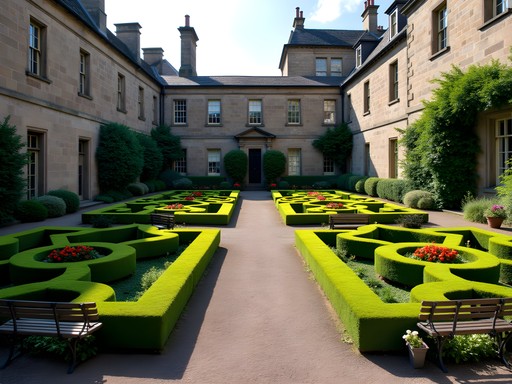







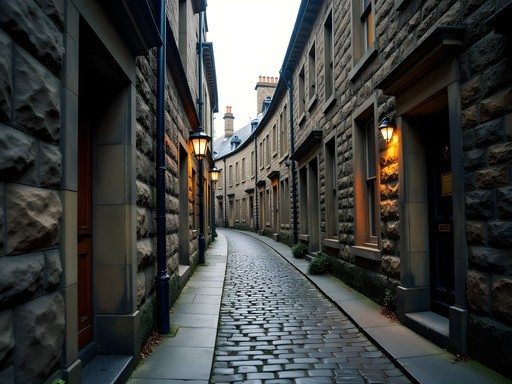


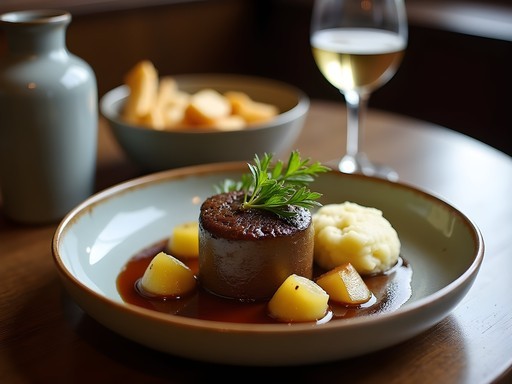
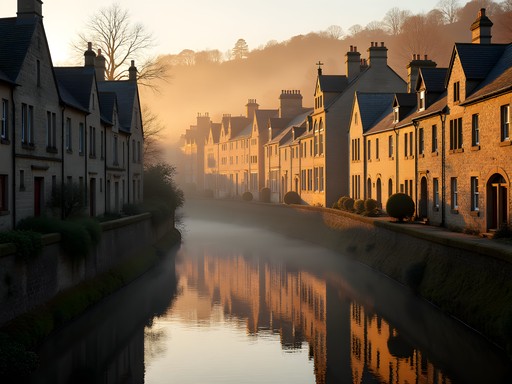

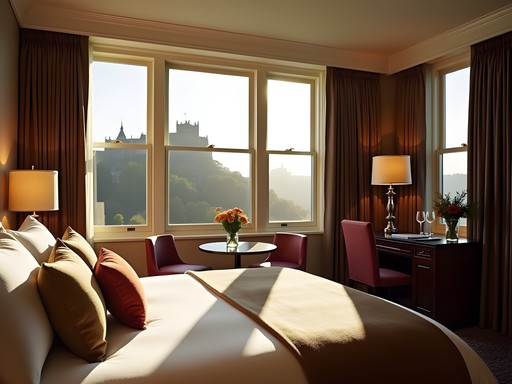

Comments
Savannah Torres
This post brought back wonderful memories! We visited Edinburgh last fall with our kids, and the Real Mary King's Close was actually their favorite part of the entire trip. Our 10-year-old still talks about the plague doctor! One hidden gem I'd add to this list is Trunk's Close, which leads to the Scottish Storytelling Centre. We stumbled upon a children's folklore session there by complete accident, and it became one of those magical travel moments you can't plan. The Royal Mile is like an iceberg - what tourists see is just the tip, with centuries of history layered underneath. Casey, your recreation background definitely gives you a unique perspective on finding these special places!
vacationperson
Is Dunbar's Close Garden suitable for someone with mobility issues? My mom uses a walker occasionally and I'm trying to plan accessible spots.
Savannah Torres
There are some cobblestones and a few steps to navigate, but it's more accessible than many places in Old Town. The garden itself has gravel paths which might be manageable with a walker. I'd recommend checking out the Royal Mile Accessibility Map on Edinburgh's official tourism site - it was super helpful when planning activities with my grandmother!
vacationperson
Thanks, I'll look up that accessibility map!
Kimberly Murphy
Casey, brilliant post! I'd add Advocate's Close to this list - one of my favorite narrow passageways with stunning views of the New Town. For anyone visiting, I recommend exploring the Royal Mile early morning (before 9am) or after 6pm when the tour groups have dispersed. The atmosphere completely changes and you can actually hear the whispers of history rather than the chatter of tourists! Also, don't forget to look UP while walking - some of the best architectural details are above eye level. Edinburgh has so many layers that even after dozens of visits, I'm still discovering new corners.
vacationperson
Great tip about going early or late! Planning our first trip for next spring.
sunnylegend
The Witches' Well was such a powerful stop on our trip last month. It's tiny and easy to miss but carries so much history. Standing there thinking about all those women who were persecuted really gave me chills. I actually used the Edinburgh Pocket Guide which had a small section on these hidden spots. The Royal Mile has so many layers of history that you'd never discover just walking through once.
roamseeker
Has anyone visited the Writer's Museum? Is it worth the time if you're only in Edinburgh for 2 days?
Savannah Torres
Absolutely! Even with just 2 days, I'd set aside an hour for it. The building itself is gorgeous, and if you appreciate literature at all, seeing artifacts from Robert Burns, Sir Walter Scott and Robert Louis Stevenson is pretty special. My kids (10 and 12) even enjoyed the interactive elements. Plus it's free!
roamseeker
Perfect, thanks! Will add it to our itinerary.
skyperson
Just got back from Edinburgh last week and totally missed most of these! Wish I'd seen this post before going. We did stumble upon Dunbar's Close Garden by accident and it was such a peaceful escape from the crowds. Felt like stepping into another century while still being right in the middle of the city. Next time I'll definitely check out Mary King's Close - heard so many people talking about it but our schedule was packed.
Kimberly Murphy
Mary King's Close is absolutely worth the visit next time! It's eerie but fascinating. Book ahead though - the queues can be brutal during peak season!
skyperson
Thanks for the tip! Will definitely book in advance next time.
Sophia Gomez
Casey, this is exactly the kind of insider content I love! I was in Edinburgh last month for a business conference and had a free afternoon to explore. The Writer's Museum was such an unexpected delight - I stumbled across it completely by accident and ended up spending two hours there. The Robert Burns artifacts were incredible. One thing I'd add for anyone visiting the Royal Mile - if you're there around sunset, check out the view from the Camera Obscura rooftop. Most people go for the exhibits inside, but the panoramic view from up there is spectacular and much less crowded than Edinburgh Castle's viewpoints. I captured some amazing golden hour photos of the city that became the highlight of my business trip presentations! I used my pocket guidebook to find a few other hidden spots, but your blog post mentions several I missed. Bookmarking for my return trip!
escapetime
That Camera Obscura tip is gold! Adding it to my list for October.
escapetime
Love these hidden spots! Totally walked past Dunbar's Close without noticing it last year. Kicking myself now!
Sophia Gomez
That's exactly why I bookmark these kinds of posts before trips! I missed it my first time too, but discovered it last month when I was there for a conference. Such a peaceful escape from the Mile crowds!
escapetime
Good tip! Definitely checking it out next time. Did you visit Mary King's Close too?
Sophia Gomez
Yes! It was fascinating but a bit eerie. Worth the ticket price though. The guide really brought the history to life.
explorelife5857
Just got back from Edinburgh and used this post as my guide - THANK YOU Casey! The Makars' Court was absolutely magical, especially since I caught a small poetry reading happening there by chance. Also loved the Real Mary King's Close tour, though it was a bit pricey (worth it though). One tip for anyone going: the closes and wynds can be confusing to navigate, so I downloaded an offline map of the Royal Mile that marked all these hidden spots. Made finding everything so much easier, especially when my phone signal was spotty in some of the narrow alleys.
dreamking
Has anyone been to the Witches' Well mentioned in the article? Is it easy to find?
mountainlegend
It's on the Castle Esplanade, right at the entrance to Edinburgh Castle. Small bronze fountain, easy to miss if you're not looking for it!
dreamking
Thanks! Will keep my eyes peeled when I'm there next week!
Venture X
Premium card with 2X miles, $300 travel credit, Priority Pass